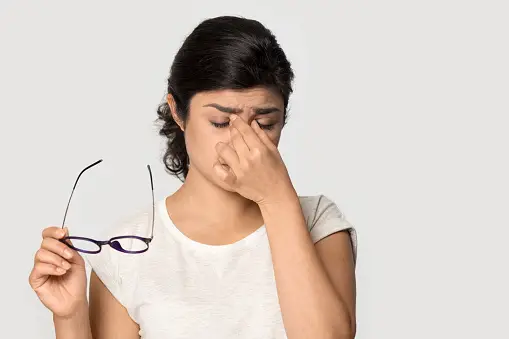Comprehensive Guide to Lazy Eye Treatment: Strategies

Introduction:
In the realm of ophthalmology, lazy eye, scientifically termed amblyopia, stands as a significant vision disorder affecting millions worldwide. Often thought to primarily afflict children, amblyopia can persist into adulthood, impacting individuals’ visual acuity and quality of life. Fortunately, the landscape of lazy eye treatment has evolved considerably. Offering a multitude of strategies and innovations aimed at optimizing visual function and promoting binocular vision. In this comprehensive guide, we embark on an in-depth exploration of lazy eye treatment, examining traditional approaches, emerging innovations, and the path forward for individuals seeking clarity and vision.
Understanding Amblyopia:
Amblyopia, commonly referred to as lazy eye, is a neurodevelopmental disorder characterized by reduced visual acuity in one eye, often despite the absence of any structural abnormalities. This condition typically arises during early childhood, during the critical period of visual development, when the brain fails to adequately process visual information from one eye. Causes of amblyopia may include:
- Strabismus: Misalignment of the eyes, where one eye deviates from its normal position, leading to unequal visual input and subsequent suppression of the affected eye by the brain.
- Refractive Errors: Variations in the refractive power of the eyes, such as nearsightedness, farsightedness, or astigmatism, can result in unequal focusing between the eyes, contributing to amblyopia.
- Deprivation: Conditions such as cataracts, ptosis (drooping eyelids), or corneal opacities that obstruct vision in one eye, depriving it of visual stimulation and leading to amblyopia.
Early detection and intervention are critical for successful treatment of amblyopia, as the brain’s plasticity diminishes with age, reducing the efficacy of interventions aimed at visual rehabilitation.
Traditional Treatment Approaches:
Historically, lazy eye treatment has encompassed several conventional approaches aimed at stimulating visual development in the affected eye and promoting binocular vision. These traditional treatment modalities include:
- Patching Therapy:
- Patching therapy, also known as occlusion therapy, involves covering the stronger eye with an adhesive patch for a specified duration each day. By depriving the brain of visual input from the stronger eye, patching encourages the use of the weaker eye, stimulating visual development and promoting equal visual input from both eyes.
- Atropine Eye Drops:
- Atropine eye drops may be used to temporarily blur the vision in the stronger eye, similar to patching therapy. By inducing blurring, atropine eye drops encourage the brain to rely on the weaker eye, facilitating visual improvement.
- Prescription Eyewear:
- Corrective lenses, such as glasses or contact lenses, may be prescribed to address refractive errors and promote equal focusing between the eyes. By correcting refractive imbalances, prescription eyewear helps optimize visual acuity and reduce the suppression of the affected eye by the brain.
- Vision Therapy:
- Vision therapy encompasses a variety of specialized exercises and activities designed to improve eye coordination, tracking, and focusing abilities. These exercises aim to retrain the visual system, strengthen ocular muscles, and enhance visual processing skills, ultimately promoting binocular vision and visual rehabilitation.
While traditional treatment approaches have been instrumental in managing amblyopia, ongoing research and technological advancements have paved the way for innovative interventions aimed at optimizing treatment outcomes and enhancing patient experiences.
Emerging Innovations in Lazy Eye Treatment:
In recent years, there has been a surge of interest and investment in innovative approaches to lazy eye treatment, leveraging advancements in technology, neuroscience, and personalized medicine. These emerging innovations hold the potential to revolutionize amblyopia management and offer new avenues for individuals seeking improved vision and quality of life. Some notable innovations include:
- Digital Therapeutic Platforms:
- Digital therapeutic platforms, such as smartphone applications and computer-based programs, offer interactive and engaging methods for delivering vision therapy exercises. These digital platforms leverage gamification, augmented reality, and personalized feedback to enhance patient engagement, adherence, and treatment efficacy.
- Virtual Reality (VR) Therapy:
- Virtual reality (VR) therapy represents a promising frontier in lazy eye treatment. Immersing patients in immersive virtual environments designed to stimulate visual engagement and promote binocular vision. By providing controlled and dynamic visual stimuli, VR therapy can target specific visual deficits and facilitate neural plasticity, leading to improved visual outcomes.
- Neuroplasticity-Based Interventions:
- Understanding the role of neuroplasticity in visual development has led to the development of innovative interventions. Which aimed at harnessing the brain’s ability to adapt and reorganize. Neuroplasticity-based interventions utilize techniques such as perceptual learning, sensory substitution, and non-invasive brain stimulation to optimize neural connectivity and promote visual improvement.
The Future of Lazy Eye Treatment:
Looking ahead, the future of lazy eye treatment holds immense promise, fueled by ongoing research, technological innovation. Growing understanding of the underlying mechanisms of amblyopia. Some key areas of focus and potential developments include:
- Targeted Therapies:
- Advances in molecular biology and gene therapy hold the potential to revolutionize lazy eye treatment. It targets specific genetic mutations and neural pathways associated with amblyopia. Targeted therapies aim to correct underlying deficits at the molecular level, offering personalized and precise interventions for individuals with amblyopia.
- Integrative Approaches:
- Integrative approaches to lazy eye treatment, combining pharmacological interventions, vision therapy, and neuromodulation techniques, are poised to become increasingly prevalent. By harnessing the synergistic effects of multiple treatment modalities, integrative approaches. It aim to optimize treatment outcomes and promote comprehensive visual rehabilitation.
- Telemedicine and Remote Monitoring:
- The integration of telemedicine platforms and remote monitoring technologies is poised to revolutionize amblyopia management. Offering convenient access to specialized care and real-time monitoring of treatment progress. Telemedicine platforms enable remote consultations, virtual vision assessments, and personalized treatment plans, expanding access to care and enhancing patient engagement.
Conclusion:
Lazy eye, or amblyopia, remains a significant vision disorder. It affects individuals of all ages, with profound implications for visual function and quality of life. While traditional treatment approaches have been instrumental in managing amblyopia. Ongoing advancements in technology, neuroscience, and personalized medicine are reshaping the landscape of lazy eye treatment. From emerging innovations such as digital therapeutic platforms and virtual reality therapy to targeted pharmacological interventions and integrative treatment approaches. The future of lazy eye treatment holds immense promise for individuals seeking clarity and vision. By embracing interdisciplinary collaboration, harnessing the power of technology, and prioritizing patient-centered care. We can pave the way for improved treatment outcomes and enhanced quality of life for individuals living with amblyopia. Together, we can unlock new possibilities and pathways to visual improvement. Empowering individuals to see the world with clarity and confidence.
Read More –
Fuel Management System Optimizing Efficiency Transportation
Dubai Divulged: Investigating the Desert spring of Lavishness and Experience


